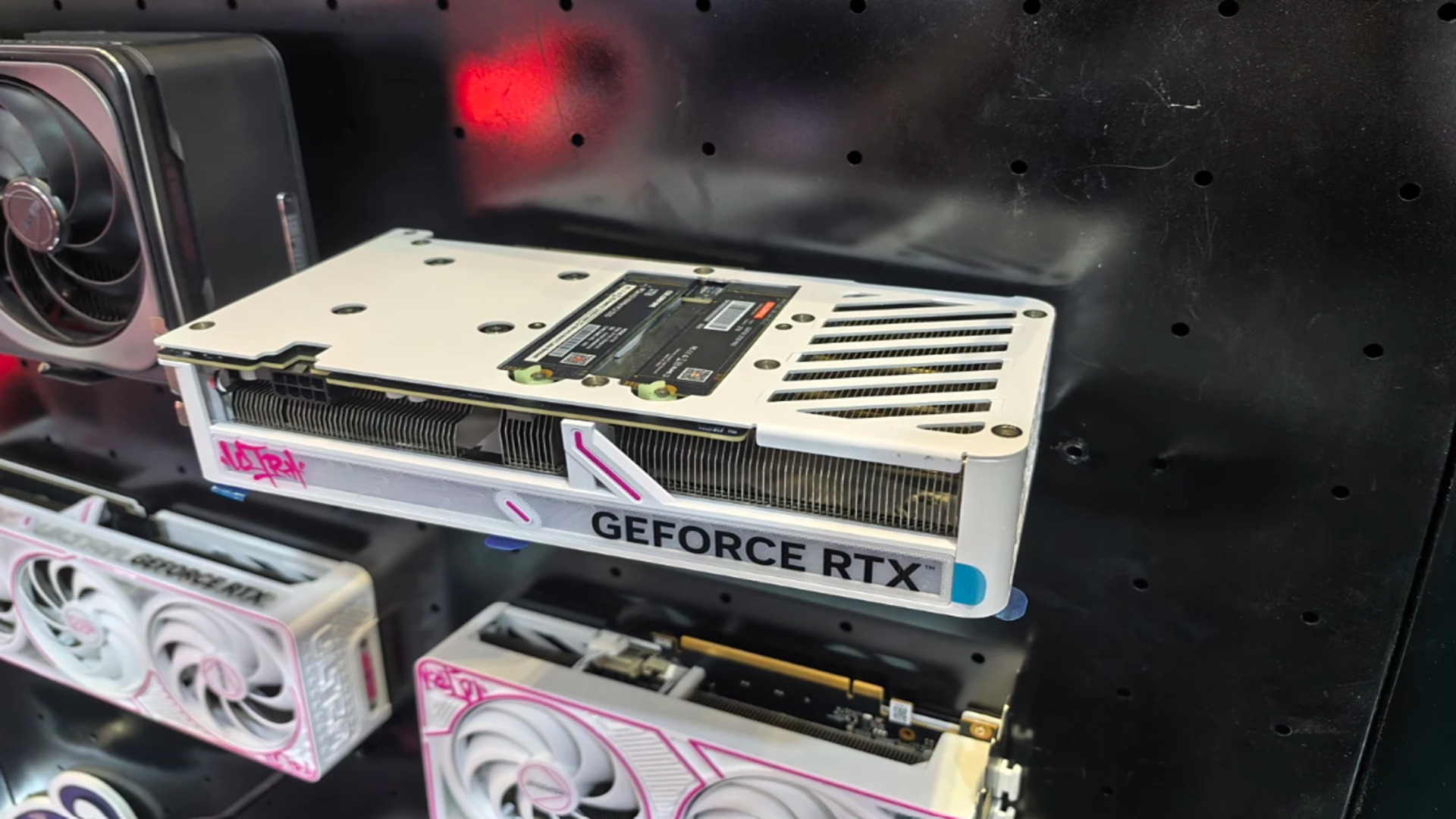Graphics cards with SSD slots are becoming more popular, but I fail to understand why these products actually exist
Dual M.2 slots on a GPU don’t make up for average gaming or compute performance

- Mounting SSDs on a GPU limits your ability to upgrade graphics and storage independently
- Shared PCIe bandwidth creates more complications than benefits for most desktop system builders
- Colorful iGame Ultra mid-range GPU is trying to do too much with too little justification
Colorful has revealed a curious hybrid product at Bilibili World 2025: a graphics card from its iGame Ultra series which features two M.2 SSD slots mounted directly onto the PCB.
The integration of storage and graphics processing may appear efficient for compact systems, but it raises questions about practicality and long-term value.
Colorful has not confirmed the GPU’s architecture, although observers believe it is based on Nvidia’s GB206 or GB207 silicon, possibly aligning with the RTX 5050 or 5060.
An integrated approach to graphics and storage
This configuration positions the card firmly in the mid-range category, far from what most would consider the best GPU tier.
The standout feature of this card is the presence of dual M.2 SSD slots on its backside, near the I/O bracket, allowing users to install drives without separate cabling.
These slots are supported by mounting points for heatsinks and are cooled by the same dual-fan system that manages the GPU itself.
By using PCIe bifurcation, the card splits a single x16 slot into eight lanes for graphics and four lanes each for the SSDs.
Sign up to the TechRadar Pro newsletter to get all the top news, opinion, features and guidance your business needs to succeed!
This setup aims to preserve bandwidth for both functions while reducing the need for additional expansion cards.
For builders working with limited motherboard M.2 slots or compact ITX cases, this could seem like a space-saving solution.
The cooling arrangement also suggests that SSD thermals will be actively managed under load - however, the benefits of this layout may not justify the compromises.
Attaching storage directly to a GPU introduces additional layers of complexity in system configuration, including BIOS support, lane sharing, and upgrade constraints.
Storage and graphics are typically upgraded on separate timelines, and combining them on a single board limits that flexibility.
Visually, the card adopts a clean, matte-white aesthetic that stands apart from the more common darker GPU designs.
While this may appeal to custom PC builders who prioritize appearance, the core performance considerations remain unchanged.
The SSD slots are unlikely to support the largest SSD capacities or deliver the best SSD speeds on the market, and the GPU itself, based on its probable architecture, is not aimed at top-tier performance.
This puts the product in a narrow use case, offering integration without delivering leadership in either category.
As of now, the company has not provided detailed specifications or pricing, and without this information, the card appears more experimental than practical.
This device is technically interesting, but it is not yet clear why such a product needs to exist beyond novelty.
For users who care about maximizing storage capacity, pursuing the best GPU performance, or building for future flexibility, this design may offer more limitations than advantages.
Via Guru3d
You might also like
- Check out the best portable SSDs you can get today
- These are the best NAS devices around
- We've also rounded up the best cloud storage platforms on offer

Efosa has been writing about technology for over 7 years, initially driven by curiosity but now fueled by a strong passion for the field. He holds both a Master's and a PhD in sciences, which provided him with a solid foundation in analytical thinking.
You must confirm your public display name before commenting
Please logout and then login again, you will then be prompted to enter your display name.